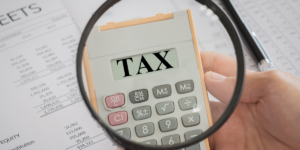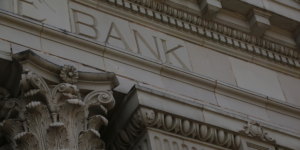You’ve seen the headlines: the Federal Reserve hiked interest rates to historic levels. They raised the target federal fund rate by .75%, which marked the most significant increase in 28 years.
While this news might sound bad, don’t panic! Here’s what this interest rate means for you, your wallet, and the economy.
Why Did The Fed Raise Interest Rates?
The federal funds rate is the interest rate at which banks borrow and lend to one another. While consumers won’t be paying this rate, it still makes borrowing money more expensive.
So, why does The Fed raise interest rates anyway? They hope to “cool off” our economic climate, namely temper out-of-control inflation rates (currently at 8.6% as of May 2022).
How does that work? When prices get higher, people tend to spend less money. This, in turn, slows down the economy and—gradually—brings inflation down to more moderate levels.
This balancing act is tricky because while they want to slow inflation, they want to avoid triggering a recession.
While things might get more expensive in the short term, the future’s looking bright if everything goes according to plan. The target? Bringing inflation down to 2% while keeping unemployment at 4%.
Will You Be Paying An Extra 0.75% Across The Board?
The short answer is no! It’s not time to hide your money underneath your mattress. This rate isn’t what consumers like you pay; rather, it’s what banks have to pay to borrow and lend to one another.
But of course, there is a trickle-down effect. Just think about everything you need a bank for: mortgage, car loan, personal loans, etc. So, even though you won’t feel the 0.75% right now, you should be prepared to see a difference in borrowing and savings rates.
Let’s look at some potential consequences of the Fed’s interest rate hike.
What Should You Do To Prepare?
Higher interest rates mean consumers may want to think differently and strategically about debt and savings.
Since banks have a larger bill for doing business, they’ll likely pass some of those expenses to borrowers. So if you’re looking for a bank loan, expect higher interest rates. Here are some interest rates to be mindful of:
- Credit cards
- Most credit cards charge variable interest rates based on the “prime rate” that the Fed influences. So if you carry a balance, prioritize paying it off. The average interest rate for new credit card offers is a whopping 18.68%! You certainly don’t want that rate compounding every month you don’t pay off your balance.
- Debt with variable interest rates
- Not all debt has fixed interest rates; some are variable, like adjustable mortgage rates or home equity lines of credit (HELOC). With rising interest rates, it might make sense to shop around for a fixed policy—though those are also higher than average. If you’re close to paying off your home remodel, it might make sense to redirect more money to that loan.
- Fixed interest rates are also getting more costly.
- If you’re looking to buy a home today, your interest rate picture will look really different than a year ago. Today, the national average for a 30-year fixed mortgage is 5.94%, which was 2.98% in June 2021.
- Even though the Fed doesn’t control auto loans, expect your new car to be more costly. Since the price of purchasing and maintaining (low supply, gas, etc.) a car is getting more expensive, you’ll feel that at the dealership.
Good News: Your Savings May Earn More
But higher interest rates aren’t all bad, at least from where your high-yield savings accounts are sitting.
That’s right; savers can finally expect to see some higher interest rates in their savings accounts and certificates of deposit (CDs).
Rates have been historically so low, which has caused concern about how savings will have any shot of keeping up with inflation. Now, you might see those earnings get a bit higher.
The bottom line is that it will likely cost more to borrow, but you’ll earn more in savings. That’s the double-edged sword of higher interest rates.
The Long-Term Plan
Remember, the Fed isn’t hiking interest rates “just because.” There’s a long-term plan in the works to curb inflation and slow the economy back to more tenable circumstances.
But don’t expect inflation to stabilize overnight. It will likely take some time until we start seeing more familiar inflation levels.
What can you do in the meantime?
- Doubledown on your debt repayment plan
- Pay your debt balances in full each month. Bonus: try to allocate more toward the principal.
- Refinance your loans to lower rates
- Keep saving
It can be challenging to navigate through these tough times of high inflation, rising interest rates, and a wobbly stock market.
Know that you’re not going through this alone. We’re here to help guide you through these times with a comprehensive, sturdy financial plan built to weather market storms.
If you have any questions about how the Fed’s decision to raise interest rates could affect you or your portfolio, set up a time to speak with our team.







